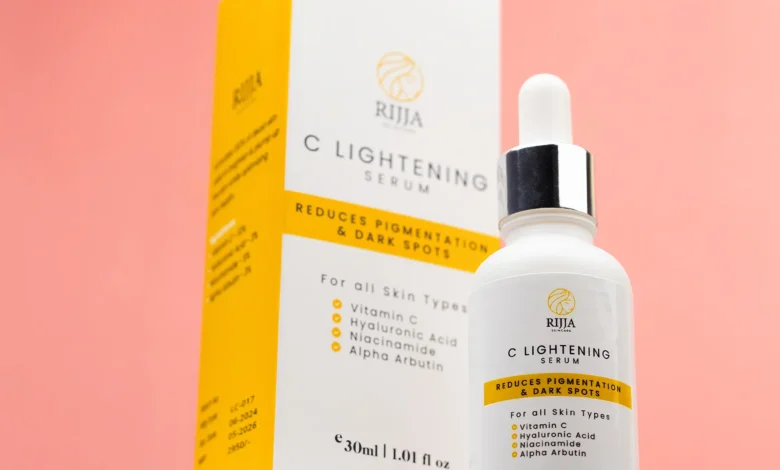Unlock Radiance: Everything You Need to Know About Brightening Serum

In the ever-evolving world of skincare, brightening serum has quickly risen to become a staple in many beauty routines. Whether you’re dealing with dullness, uneven skin tone, dark spots, or post-acne marks, a good brightening serum can truly work wonders. But not all serums are made equal—and with so many options on the market, it’s easy to get overwhelmed.
So, let’s break it all down—from how brightening serums work, to what ingredients you should look for, to how to actually use one for the best results.
What Is a Brightening Serum?
A brightening serum is a skincare product specifically formulated to target dullness, hyperpigmentation, and uneven skin tone. It’s usually lightweight and packed with active ingredients that penetrate deep into the skin to deliver results.
The word “brightening” can be a bit misleading. It doesn’t mean bleaching your skin or making it lighter—it means reviving your natural glow. Brightening serums work to correct damage from the sun, acne, or aging that causes skin discoloration, ultimately helping you achieve a smoother, more radiant complexion.
These serums are ideal for anyone who wants to improve their skin’s clarity and vibrancy. They can be used by people of all skin tones and types, including sensitive skin—though it’s essential to pick the right formulation.
Brightening serums are typically used after cleansing and before moisturizing, and they can be worn under sunscreen or makeup. Think of them as the power-packed step in your routine that tackles specific issues while giving your skin that “lit from within” look.
How Do Brightening Serums Actually Work?
Brightening serums contain potent active ingredients that target melanin production, inflammation, and cellular turnover. Most work by inhibiting tyrosinase, an enzyme involved in the creation of melanin—the pigment responsible for dark spots and uneven skin tone.
By slowing down melanin production, these serums can help fade existing pigmentation and prevent new dark spots from forming. In addition, many brightening serums include exfoliating agents that encourage cell turnover, helping your skin shed dead cells more quickly and allowing new, healthy cells to surface.
Another way they work is through antioxidant protection. Environmental stressors like UV radiation and pollution contribute to dull, tired-looking skin. Brightening serums often include antioxidants like Vitamin C, niacinamide, and green tea extract to fight free radicals and protect your skin from future damage.
While results aren’t usually instant, consistent use over a few weeks can show visible improvements in skin tone, texture, and brightness. The key is patience and regular application.
Key Ingredients to Look For in a Brightening Serum
Not all serums are created equal, and the ingredient list is where the magic—or the lack thereof—happens. Here are some of the most effective ingredients you’ll commonly find in brightening serums and what they do:
1. Vitamin C
Arguably the MVP of brightening ingredients, Vitamin C is a powerful antioxidant that reduces melanin production, boosts collagen synthesis, and protects the skin against environmental damage. It’s best used in the morning under sunscreen to amplify its protective effects.
However, Vitamin C is notoriously unstable—so look for serums packaged in dark or opaque bottles and store them away from heat and light.
2. Niacinamide
Also known as Vitamin B3, niacinamide is a multitasking marvel. It brightens skin, reduces redness, improves texture, and strengthens the skin barrier. It’s gentle enough for sensitive skin and plays well with other active ingredients.
What makes niacinamide unique is its ability to even out skin tone without irritating the skin. It also helps regulate oil production, which is a bonus for acne-prone folks.
3. Alpha Arbutin
Derived from the bearberry plant, alpha arbutin is a gentle yet effective skin brightener. It inhibits melanin production without irritating or damaging the skin, making it a favorite for people with sensitive or reactive skin types.
Alpha arbutin works well when paired with ingredients like hyaluronic acid for hydration and Vitamin C for enhanced brightening.
4. Licorice Root Extract
This plant-based ingredient has natural skin-brightening properties and is also anti-inflammatory, making it suitable for calming redness and fading dark spots over time.
Licorice root is ideal for those with rosacea or post-inflammatory hyperpigmentation, as it soothes while correcting uneven tone.
5. Kojic Acid
A more potent option, kojic acid is a byproduct of the fermentation process of certain fungi. It’s a strong melanin inhibitor but can be irritating to some skin types, so patch testing is crucial.
Kojic acid is often used in conjunction with other brighteners in professional-grade formulations.
How to Use a Brightening Serum for Best Results
Applying a brightening serum correctly can significantly impact its effectiveness. It’s not just about slapping it on and hoping for the best—there’s a method to the magic.
Start with a clean face. Use a gentle cleanser to remove dirt, oil, and impurities. Then, while your skin is still slightly damp, apply a few drops of your serum. Gently pat (don’t rub!) it into your face and neck. Wait a minute or two to let it absorb fully before moving on to moisturizer or sunscreen.
Most brightening serums are designed to be used once or twice daily. If your serum contains Vitamin C, it’s best used in the morning to take advantage of its antioxidant benefits during the day. If your serum contains exfoliating acids (like glycolic or lactic acid), you might want to use it at night to avoid sun sensitivity.
Remember to always wear SPF when using brightening serums—especially those with actives like Vitamin C or kojic acid—as your skin becomes more sensitive to UV damage.
Consistency is key. You won’t see results overnight, but after about 4 to 6 weeks of daily use, most people notice a visible improvement in brightness, clarity, and evenness of tone.
Are Brightening Serums Safe for All Skin Types?
Generally, yes—but with a few caveats. Brightening serums come in a variety of strengths and formulations, so finding the right one for your skin type is essential.
For dry or sensitive skin, opt for gentle formulas that include hydrating ingredients like hyaluronic acid or squalane. Niacinamide and alpha arbutin are great choices here.
If you have oily or acne-prone skin, look for lightweight, oil-free formulations. Serums with Vitamin C or niacinamide can help reduce inflammation and control sebum production.
Those with combination skin may want to layer their serum under a moisturizer tailored to different areas of the face—for example, something richer on dry cheeks and lighter on the T-zone.
And if you have very reactive or allergic skin, always do a patch test first. Even gentle brighteners can cause irritation if your skin barrier is compromised.
Choosing the Right Brightening Serum for You
With the market overflowing with brightening serums, how do you pick the right one? The answer lies in your skin goals and sensitivity levels.
If you’re looking to fade acne scars or post-inflammatory hyperpigmentation, opt for serums with niacinamide, alpha arbutin, or licorice root. If your main concern is dullness or sun damage, a potent Vitamin C serum might be the best fit.
It also helps to consider texture. Some serums are water-based and absorb quickly, perfect for layering under makeup. Others are thicker or oil-based, offering more hydration but potentially clogging pores if you’re acne-prone.
Don’t be afraid to try samples, read reviews, and take your time. Your perfect match is out there—it just might take a little testing to find it.
Final Thoughts: Is a Brightening Serum Worth the Hype?
In a word—yes. Brightening serums are one of the most transformative products in skincare, and their results speak for themselves. They tackle some of the most stubborn skin concerns like dark spots, uneven tone, and dullness without the need for harsh treatments or invasive procedures.
The key is choosing the right ingredients for your skin type, being consistent with your routine, and pairing it with daily sun protection. It’s not a quick fix, but over time, a brightening serum can genuinely change the way your skin looks and feels.
So if your goal is to get that glow—without filters or heavy makeup—a brightening serum might just be your new best friend.



